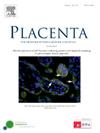First trimester extravillous trophoblast secretes HLA class I molecules via small extracellular vesicles
IF 3
2区 医学
Q2 DEVELOPMENTAL BIOLOGY
引用次数: 0
Abstract
Introduction
Human pregnancy requires acceptance and support for the semi-allogeneic embryo and effective protection of both mother and fetus. A failure to adapt, from either side, may cause abortion. The placenta-derived extracellular vesicles (EVs) have a crucial role in human implantation and pregnancy. These are lipid bilayer membrane-delimited, nano-to-micro sized extracellular microvesicles of endosomal origin, containing diverse signaling molecules, and functioning as short and long-distance messengers. We have already shown that first-trimester placenta releases the soluble HLA-C and HLA-G KIR ligands to modulate maternal cytotoxicity via the KIR/HLA axis. This study is to find whether extravillous trophoblast (EVT) secretes these HLA class I molecules via small EVs.
Methods
sEVs were isolated by ultrafiltration or precipitation from serum-free conditioned media from primary trophoblast-derived EVT, and non-tumor EVT-like model Sw71 cell line, cultured as monolayer and spheroids. sEVs from cultured placental explants served as a positive control. Combined data from several methods was used for their characterization including BCA, DLS, TEM, IEM, Dot blot, and FACS.
Results
Primary trophoblast-derived EVT and Sw71 EVT-like cells produced intact and well-visible CD63+, HLA-G- and HLA-C-bearing sEVs, regardless of culture mode and type of isolation. Both methods yielded sEVs sized 30–100 nm.
Discussion
We show original data on the HLA-C secretion via sEVs by early pregnancy EVT and confirm the production of HLA-G-positive sEVs. A new asset to the usefulness of the Sw71 spheroid model as an implanting blastocyst surrogate is added as a tool to elucidate the sEV-based signalization in the implantation.

妊娠早期,卵泡外滋养细胞通过细胞外小泡分泌HLA I类分子
人类怀孕需要对半异体胚胎的接受和支持,以及对母胎双方的有效保护。无论从哪方面来看,未能适应都可能导致流产。胎盘来源的细胞外囊泡(EVs)在人类着床和妊娠中起着至关重要的作用。这些是脂质双层膜分隔的,纳米到微米大小的内体起源的细胞外微泡,包含多种信号分子,并作为短距离和远距离信使。我们已经证明,妊娠早期胎盘释放可溶性HLA- c和HLA- g KIR配体,通过KIR/HLA轴调节母体细胞毒性。本研究旨在探讨上皮外滋养细胞(EVT)是否通过小上皮细胞分泌这些HLA I类分子。方法从原代滋养层细胞衍生EVT和非肿瘤EVT样模型Sw71细胞系的无血清条件培养基中,采用超滤或沉淀法分离sev,分别培养为单层和球形细胞。培养的胎盘外植体sev作为阳性对照。结合BCA、DLS、TEM、IEM、Dot blot和FACS等多种方法的数据进行表征。结果无论培养方式和分离类型如何,原代滋养层细胞衍生的EVT和Sw71 EVT样细胞均产生完整且清晰可见的携带CD63+、HLA-G和hla - c的sev。两种方法都得到了尺寸为30-100 nm的sev。我们展示了妊娠早期EVT通过sev分泌HLA-C的原始数据,并证实了hla - g阳性sev的产生。Sw71球体模型作为植入囊胚替代物的有用性增加了一项新资产,作为阐明植入过程中基于sev的信号的工具。
本文章由计算机程序翻译,如有差异,请以英文原文为准。
求助全文
约1分钟内获得全文
求助全文
来源期刊

Placenta
医学-发育生物学
CiteScore
6.30
自引率
10.50%
发文量
391
审稿时长
78 days
期刊介绍:
Placenta publishes high-quality original articles and invited topical reviews on all aspects of human and animal placentation, and the interactions between the mother, the placenta and fetal development. Topics covered include evolution, development, genetics and epigenetics, stem cells, metabolism, transport, immunology, pathology, pharmacology, cell and molecular biology, and developmental programming. The Editors welcome studies on implantation and the endometrium, comparative placentation, the uterine and umbilical circulations, the relationship between fetal and placental development, clinical aspects of altered placental development or function, the placental membranes, the influence of paternal factors on placental development or function, and the assessment of biomarkers of placental disorders.
 求助内容:
求助内容: 应助结果提醒方式:
应助结果提醒方式:


